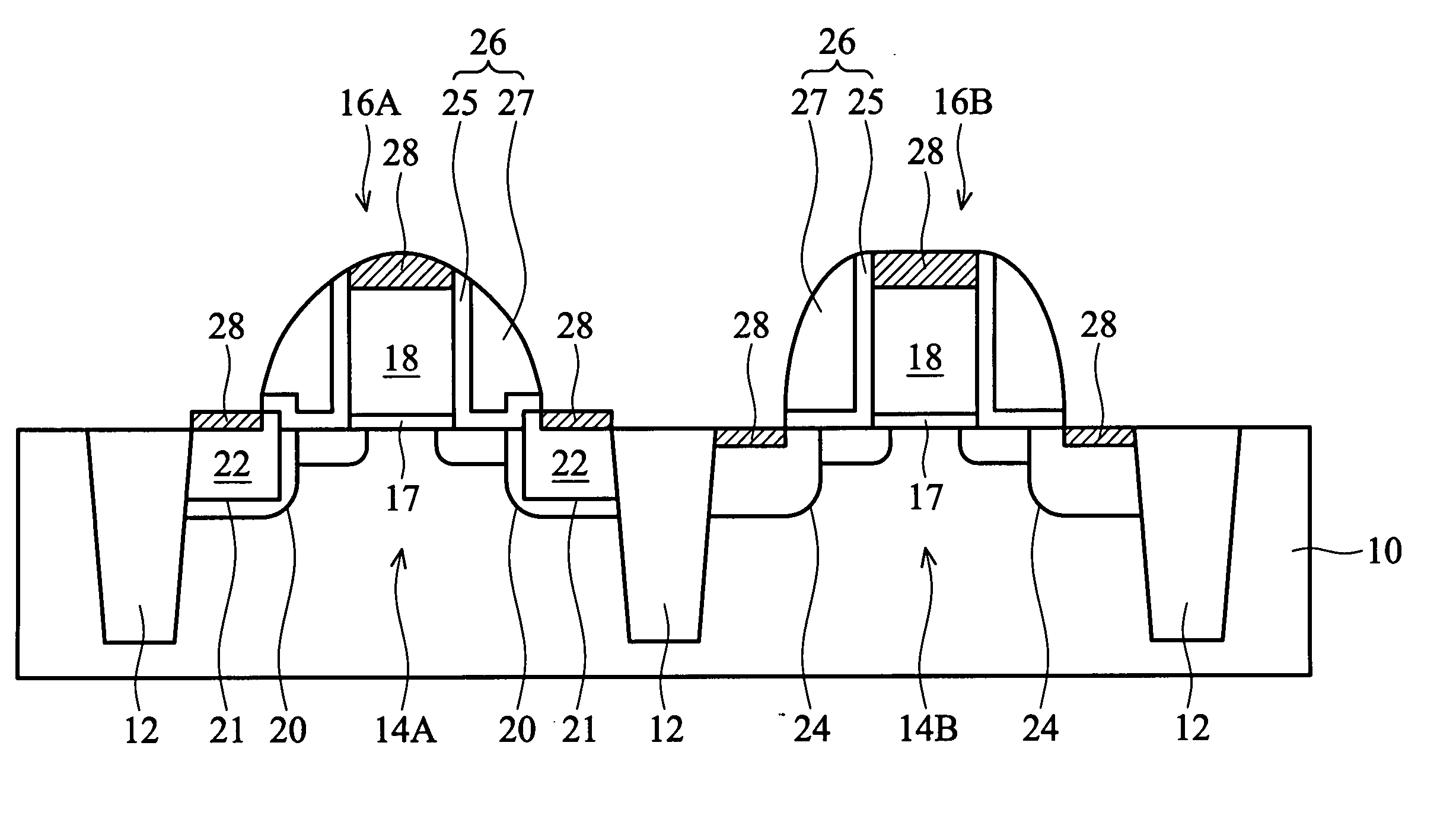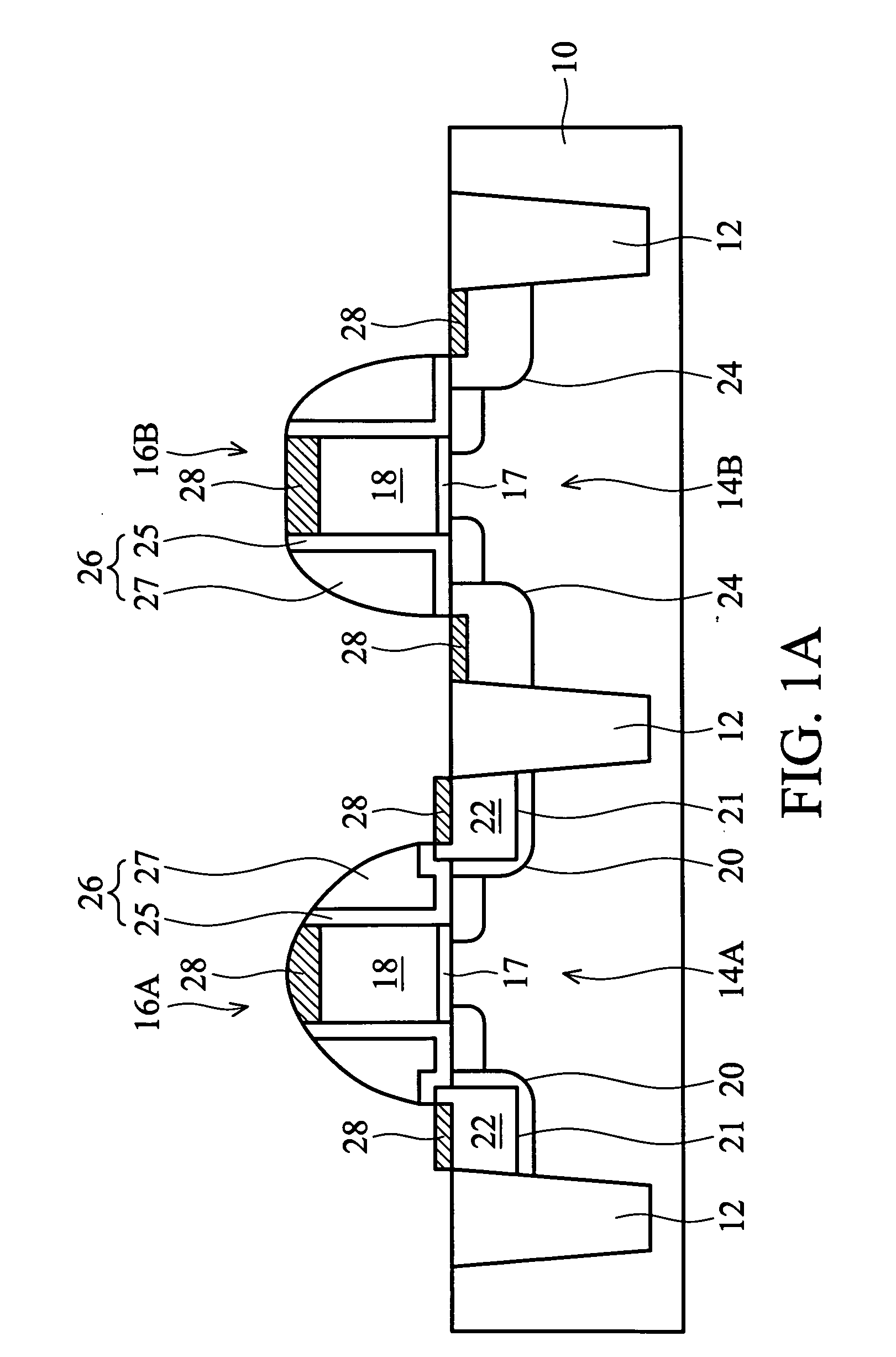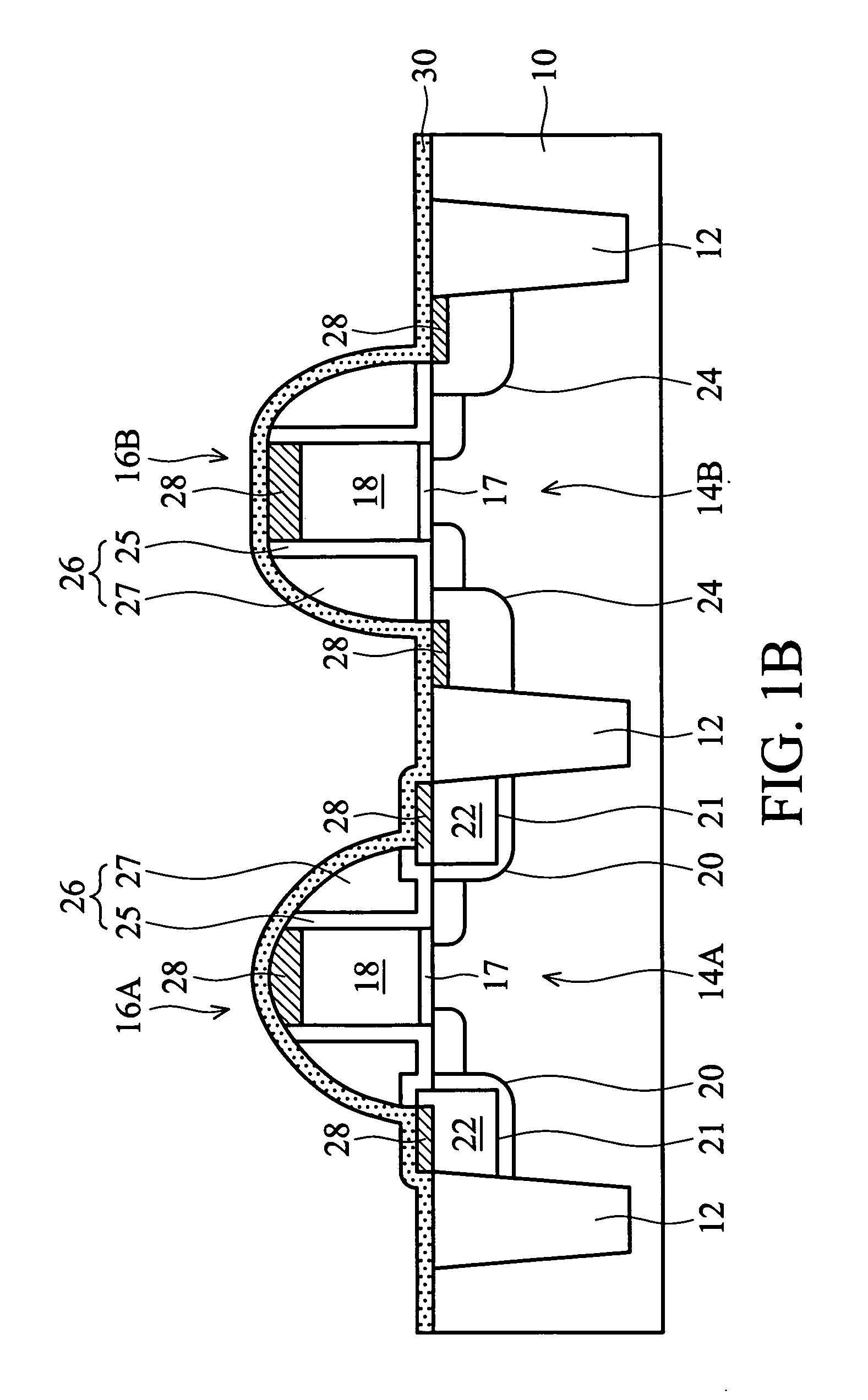Strain enhanced CMOS architecture with amorphous carbon film and fabrication method of forming the same
a technology of amorphous carbon film and enhanced cmos, which is applied in the field of cmos devices, can solve the problems of high process cost, affecting device performance, and nmos and pmos devices requiring different types of stress
- Summary
- Abstract
- Description
- Claims
- Application Information
AI Technical Summary
Benefits of technology
Problems solved by technology
Method used
Image
Examples
Embodiment Construction
[0016] Embodiments of the present invention provide strain enhanced CMOS devices using amorphous carbon films and fabrication methods of forming the same, which overcome the aforementioned problems of the prior art through the use of SiN capping films. The amorphous carbon (a-C) film, such as a fluorinated amorphous carbon (a-C:F) film, is a low-temperature deposition material formed by chemical vapor deposition (CVD) or physical vapor deposition (PVD). The amorphous carbon film has low dielectric constant. For example, a-C:F has a k value less than 2.8. Depending on deposition conditions (e.g., power, temperature, and the like), the amorphous carbon film may be formed of a tensile film or a compressive film to act a stress capping film that may be selectively formed on a pMOS device region and / or an nMOS device region. The amorphous carbon film may also act a contact etching stop layer (CESL) because of its good selectivity to oxide, nitride and silicide, thus the problems caused b...
PUM
| Property | Measurement | Unit |
|---|---|---|
| dielectric constant | aaaaa | aaaaa |
| thickness | aaaaa | aaaaa |
| dielectric constant | aaaaa | aaaaa |
Abstract
Description
Claims
Application Information
 Login to View More
Login to View More - R&D
- Intellectual Property
- Life Sciences
- Materials
- Tech Scout
- Unparalleled Data Quality
- Higher Quality Content
- 60% Fewer Hallucinations
Browse by: Latest US Patents, China's latest patents, Technical Efficacy Thesaurus, Application Domain, Technology Topic, Popular Technical Reports.
© 2025 PatSnap. All rights reserved.Legal|Privacy policy|Modern Slavery Act Transparency Statement|Sitemap|About US| Contact US: help@patsnap.com



